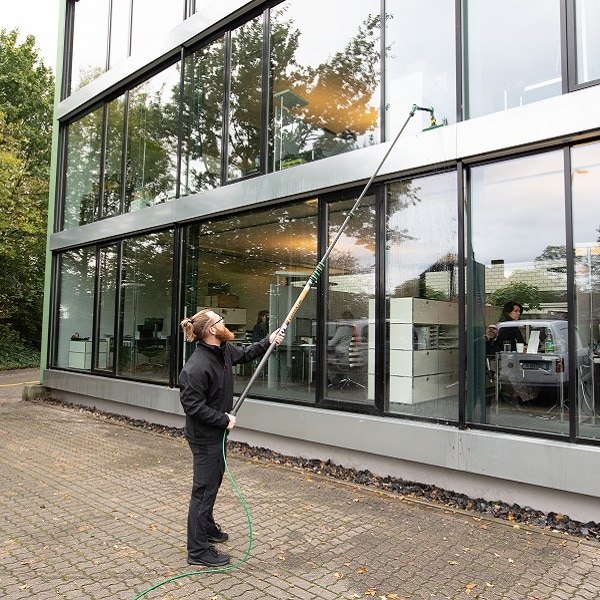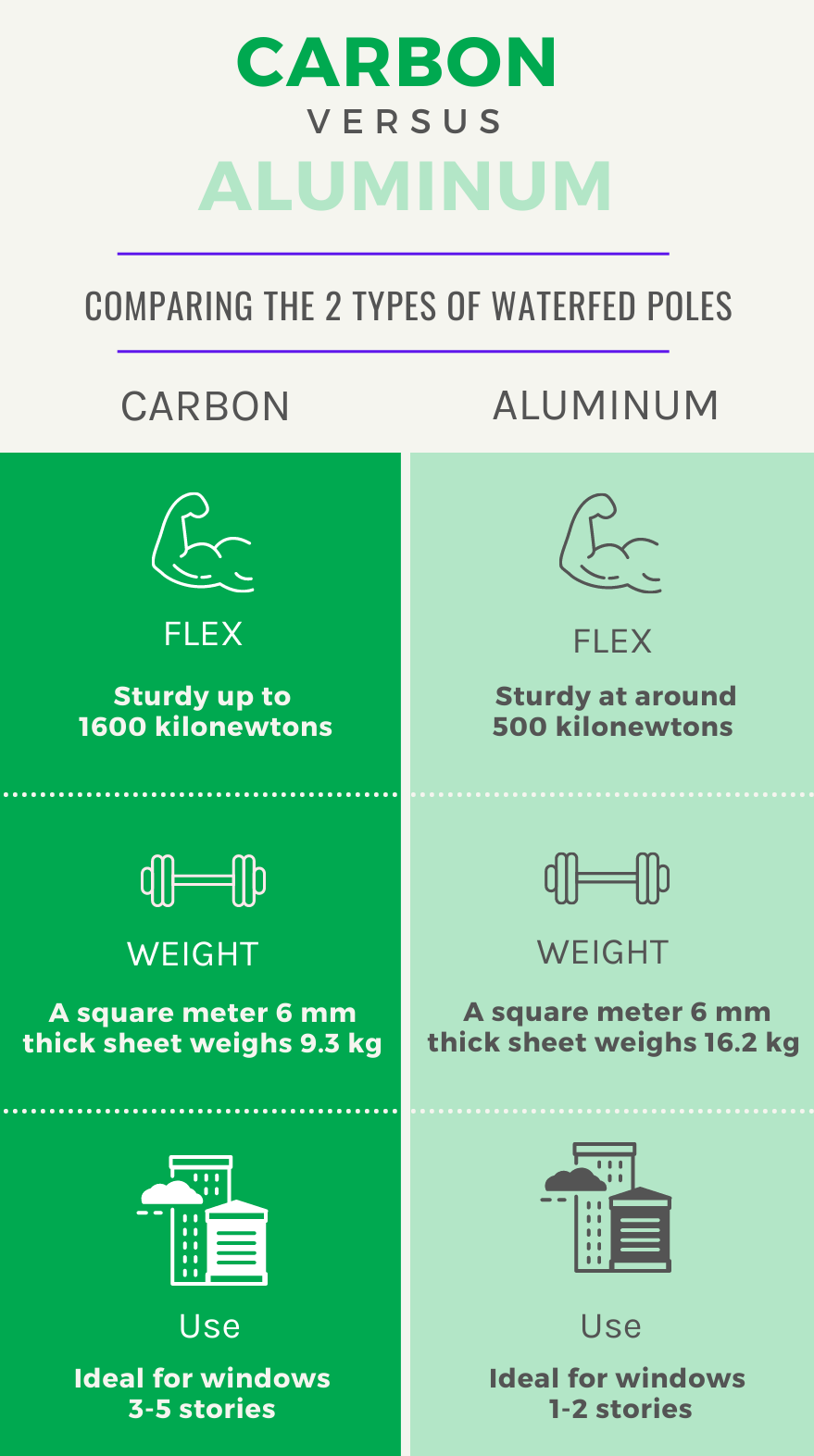
The Aluminum vs. Carbon Water Fed Pole: Determining which Tool is the Best Pole for the Job
Window cleaning professionals globally would agree that the introduction of water fed cleaning poles has significantly changed the industry, especially in terms of enhancing worker safety. Namely, waterfed poles provide a safer method for reaching high access windows and glass, undoubtedly reducing the occurrence of falls and ladder-related injuries.
With the benefits of using a water fed pole system clear, manufacturers continue to develop the latest innovations designed to make these poles outperform their predecessors, making the decision as to which type of pole is best harder to identify. To help select which pole is right for you and/or your facility’s outdoor window cleaning needs, you’ll need to consider a handful of key factors, such as brand reputation quality and product differentiators, especially when it comes to an aluminum vs. carbon water fed poles.
What to Consider When Buying a Water Fed Pole
The obvious benefit of water fed poles is that they keep the window cleaner’s feet planted firmly on the ground, but that’s not to say that water fed pole usage doesn’t come without its physical risks. Wrist pain, numbness of fingers, elbow pain, shoulder pain, upper and lower back pain, neck pain and tension headaches are all potential risks from regular extended usage. Minimizing these risks has a lot to do with the pole’s design, so you’ll need to evaluate the following:
- Flex
Flex (or rigidity) refers to how much flexibility is displayed by the pole when force is applied. In general, the less rigid a pole is, the floppier it is at extended heights and the more difficult it is to handle. - Weight
Add in the inertia of a heavier pole, and the amount of effort required to complete the job increases significantly. From an ergonomic perspective, with a higher stiffness-to-weight ratio the operator can complete the work more efficiently and with the least amount of effort, ultimately reducing the risk of repetitive motion injury. - Price
Telescopic water fed poles are available in a variety of materials, lengths and price points. When evaluating costs, not only should you consider the upfront purchase cost, but also the longer term, indirect costs of buying a pole based on price alone, such as missed days of work due to physical injury and the longevity of the pole’s material.
Comparing an Aluminum vs Carbon Water Fed Pole
Window cleaning poles are manufactured in a variety of materials, including HiMod®, Kevlar, and various hybrids of these materials, but the two most popular types of water fed poles we will analyze here are carbon and aluminum.
For many years, aluminum poles have been the industry standard given that they are durable, long lasting, and less expensive than other poles designed with alternative materials. Then came the carbon fiber water fed pole. Today, with a multitude of water fed poles on the market, it’s important to note that both aluminum and carbon window cleaning poles have their place in the professional window cleaning industry. Looking at the pros and cons of each option will help you determine which tool is best for your window cleaning jobs.
- Flex
Aluminum has a strength of about 500 kilonewtons compared to carbon fiber which can have up to 1600 kilonewtons of strength. Simply put, carbon fiber is 2 – 5 times more rigid than aluminum.Looking at the aluminum pole, it flexes considerably when extended above 30 feet, which for the user, translates into increased exertion to complete the job. More effort means a greater likelihood of fatigue which in turn, could result in a longer time on-site. When you factor in high pressure water running through the pole, the flex of an aluminum pole becomes even more cumbersome and has a greater potential to cause injury to the operator and damage to the facility’s window and glass. - Weight
Carbon fiber composite has a density almost 2 times less than aluminum, meaning that carbon fiber reduces the weight of an aluminum pole of the same size by approximately 42%. Combined with its rigidity, carbon poles reduce the fatigue and risk of repetitive stress injuries. Because carbon poles minimize the effort needed to remove dirt and debris from windows and overall exertion to clean high access windows, professionals can finish jobs faster and with dramatically less physical strain. - Price
A carbon waterfed pole has a higher upfront cost than its aluminum counterpart. Since they are more expensive, they are not always the best option for window cleaning at lower heights.

Making the Right Choice for Your Window Cleaning Operations
Carbon pole systems offer professional window cleaners an extremely light and rigid pole, making it ideal for safely and more efficiently cleaning high access windows and glass. Alternatively, aluminum window cleaning poles provide a cost-effective value, and when compared to materials other than carbon, such as fiberglass, offer more rigidity and longevity. For cleaning lower-level windows where flex and weight are not as critical, aluminum poles can get the job done effectively.
Before making a pole selection, a product demonstration will assist you in assessing the pole’s flex, weight, ergonomics and maneuverability. Click here to request a demo of Unger’s latest Generation 2 nLITE® water fed pole system.
Regardless of which pole you enlist in your operations, safety remains a top priority. Other than pole selection, you can reference IWCA’s Water-fed Pole Safety Program for other important considerations and protocols.
